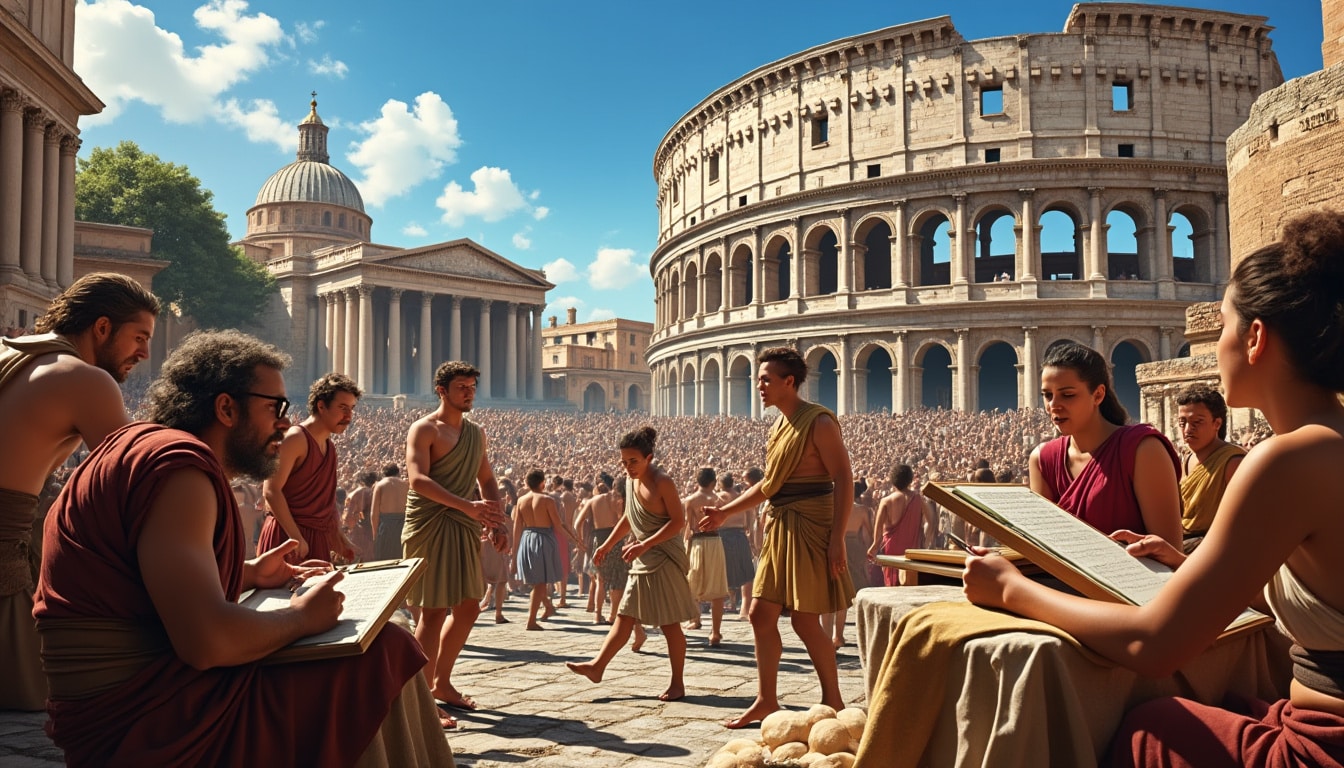Navigating the bustling streets of Rome, not just as a tourist but even as a local, necessitates a certain fluency in its unique communication landscape. From ancient traditions to modern nuances, understanding Rome’s calling and communication rules reveals a fascinating dimension of the city’s social fabric. Dive into the intricacies of how Romans express themselves, connect with each other, and the essential etiquette that nuances their daily exchanges.
Rome Calling: Historical Context and Evolution
Communication has been the lifeblood of Rome since ancient times. The Roman Empire was legendary not just for its military prowess and architectural feats, but also for its robust network of communication that propelled its operations. This ability to maintain a common narrative and uphold shared beliefs was critical in holding the extensive empire together. In today’s Rome, this legacy translates into a vibrant mix of historical influence and modern advances, creating a rich tapestry of expressions and connections.
The ancient Romans devised several methods to ensure information spread across their vast territories. Among them, orations played a crucial role. These were grand speeches delivered in public spaces, often by leaders, to convey important messages to large audiences. Accompanying these orations were iconographic gestures, like the famous ‘V’ sign. Today, recognized as a symbol of peace, in ancient times, it represented the number five, assisting in non-verbal communication over noisy or crowded areas.
Beyond gestures and speeches, writing served as a steadfast pillar of communication. Romans penned millions of texts, from inscriptions carved in stone to private notes on wax tablets. The Latin alphabet, though only consisting of 22 letters during ancient times, proved instrumental in spreading Roman culture. Surprisingly, this alphabet still influences languages in Northern Europe today. This historical foundation shapes how modern Rome approaches communication, highlighting the city’s blend of tradition and innovation.
Modern Romans inherit this legacy, with calling practices deeply intertwined with their cultural history. The evolution from direct orations to phone calls symbolizes a shift towards efficiency and privacy while preserving the richness of personal connections. Visitors to Rome, keen on authentic experiences, would do well to recognize and respect these traditions, merging the past with the present as they engage with Romans.
| Era | Mode of Communication 📞 | Purpose |
|---|---|---|
| Ancient Rome | Orations & Gestures | Public announcements, cultural reinforcement |
| Middle Ages | Written Letters | Personal and administrative communication |
| Modern Rome | Phone Calls & Digital Messaging | Everyday interactions, maintaining social ties |
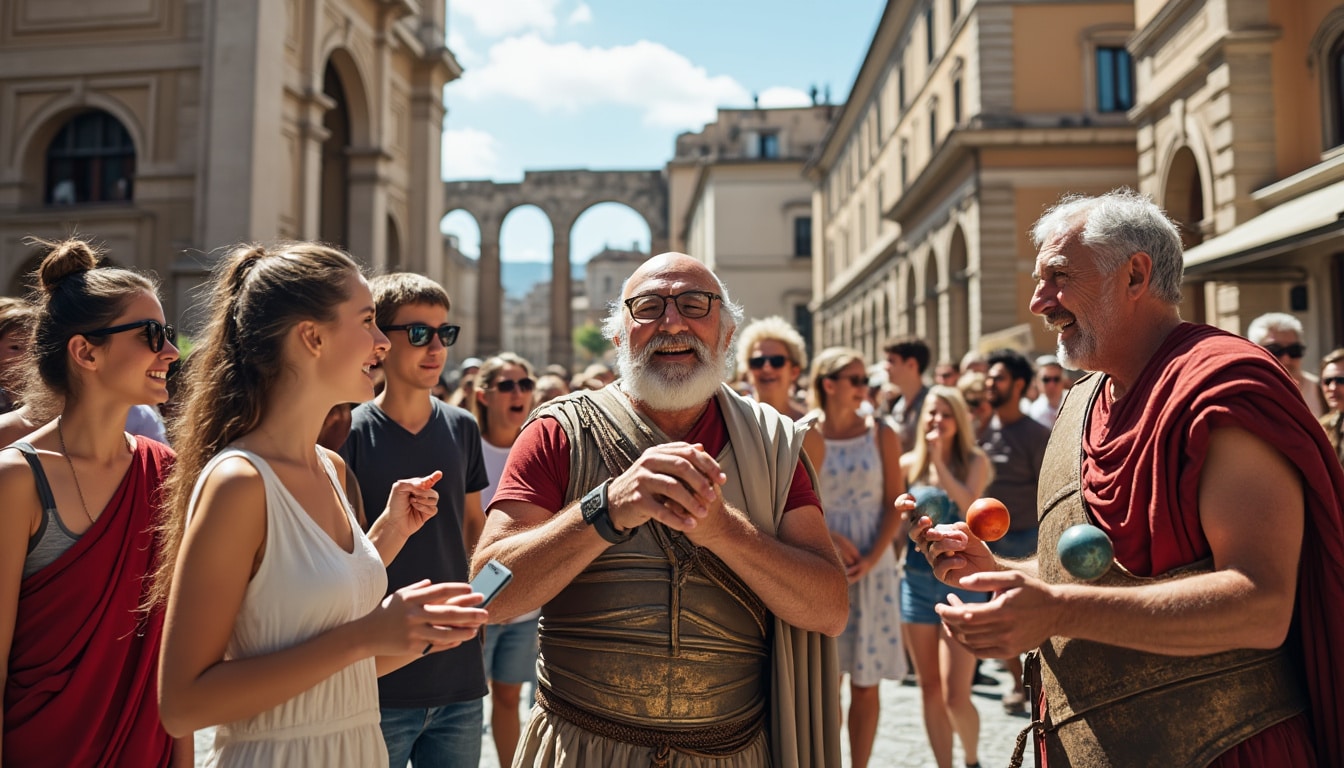
CommuniRome: The Art of Conversation
Conversing in Rome encapsulates more than just exchanging words; it’s an art form that has evolved over centuries. In a city where history whispers through the cobblestones, Rome’s conversational style reflects its deep-rooted traditions and contemporary innovations. Engaging with a Roman means stepping into a dialogue filled with enthusiasm, expression, and a touch of drama.
Romans are known for their expressive communication style. When entering a conversation, expect animated gestures, enthusiastic exchanges, and an overall lively engagement. This style stems from an innate appreciation for storytelling, a cultural heritage that Romans value and continue to foster. Conversations often transcend verbal exchanges, utilizing non-verbal cues like eye contact, hand gestures, and even a sophisticated nod system to express agreement or interest.
In social settings, specific etiquette governs these interactions. It’s common for Romans to greet each other with warmth, often accompanied by a light kiss on both cheeks or a firm handshake. When addressing someone, respect for titles and formal language remains important, particularly if you’re interacting in business or formal circumstances. Crafting conversations in Rome also involves careful choice in topics—family, cuisine, and arts are cherished subjects, whereas discussing politics or controversial topics is best approached cautiously.
A noteworthy feature of Roman conversation is the preference for in-person exchanges over digital communication. While technology has undoubtedly shaped modern interaction, there’s a persistent love for face-to-face dialogues, seen as more genuine and engaging. This preference highlights Rome’s emphasis on personal connections and the belief that a significant part of communicating involves reading the other person’s emotions and reactions.
- 😊 Warm greetings are customary
- 🎭 Expressive gestures enhance understanding
- 👨👩👦👦 Family topics foster connection
- 🍝 Discussing food and culture is always a safe haven
- 💼 Formal titles add a layer of respect
In essence, mastering the art of conversation in Rome opens doors to deeper connections and enriching experiences, making every exchange memorable.
RomeLink: The Intricacies of Calling
In the age of smartphones and instant messaging, telephone communication remains a fundamental way to connect in Rome. However, adapting to the nuances of calling in this historical city can greatly enrich one’s experience. Understanding Rome’s calling etiquette and preferences ensures smoother interactions, whether connecting with locals, booking tours, or setting up business meetings.
When dialing into Rome, it’s vital to appreciate the cultural importance of timing and language. Romans hold certain hours sacred—typically avoiding calls during early lunch hours or late in the night. The concept of “siesta” still influences these practices, encouraging a slower pace and emphasizing respect for personal time. Furthermore, starting your call with a polite greeting such as “Buongiorno” or “Buonasera” sets the right tone.
Using the phone in Rome extends beyond spoken language. For visitors, a touch of Italian goes a long way, even if it’s a few basic phrases. Adding “Rome Connect” to one’s calling strategy involves adopting a courteous tone, maintaining patience, and understanding that Italians might prefer more detailed conversations rather than quick exchanges.
| Aspect | Practice 📞 | Considerations |
|---|---|---|
| Timing | Avoid early lunch and late night calls | Respect for personal time |
| Language | Incorporate polite Italian phrases | Improves local engagement |
| Tone | Courteous and patient | Facilitates open conversations |
While technological advancements provide an array of communication tools, integrating these historical nuances into your Rome experience enriches interactions, naturally advancing from a tourist to a welcome guest.
Rome Voice: Embracing the Digital Age
The digital era has not left Rome untouched; in fact, it has added a dynamic layer to its traditional communication methods. Dial Rome into the new age, and you will find an intriguing blend of social media, messaging apps, and online platforms all contributing to the modern Roman way of connecting. Balancing the rich historical backdrop with digital advancements, Romans engage with technology in a manner that complements their heritage.
Despite the city’s ancient roots, Romans have embraced digital communication with enthusiasm. Tools like WhatsApp and Messenger are staples in daily exchanges, allowing rapid communication that aligns with global trends. These platforms have become vital for personal and business interactions, embodying an evolution from the historical postal systems once used to relay messages across empires.
Furthermore, social media has been transformative. Platforms like Instagram and Facebook provide a stage for Romans to share their artistry, culinary journeys, and cultural events, effectively connecting Rome’s vibrant life with the world. Similarly, businesses in Rome leverage these tools to reach international audiences, making commerce as connected as the city’s ancient trade routes.
While email and social networks dominate business communication, Romans prefer voice messages and video calls for personal interactions. Such preferences echo the Roman tradition of animated and heartfelt conversations. This blend of old and new offers travelers a firsthand look at how Romans hold onto their rich past while embracing the future, merging technological tools with human interactions that are warm and personal.
- 📱 WhatsApp and Messenger for quick exchanges
- 📸 Social media for sharing cultural heritage
- 🗣️ Video calls and voice messages foster personal connection
Talk in Rome: Understanding Local Communication
Immersing oneself in local communication styles is a gateway to understanding the soul of Rome. This vibrant city’s languages, dialects, and unique expressions offer insight into its cultural nuances and the everyday life of its inhabitants. Knowledge of these aspects enriches visits, facilitates smoother interactions, and allows one to connect deeply with the Roman community.
Beyond the official Italian language, Rome is home to a myriad of dialects. The Romanesque dialect, with its unique words and rhythms, paints a vivid picture of local life. It might come as a surprise to visitors to find Romans switch seamlessly between Italian and dialects in casual conversations, each language serving different social functions. This bilingualism is not just practical but acts as a cultural bridge, inviting outsiders to participate in the community’s shared narratives.
Touring Rome without grasping some of its local sayings might mean missing out on authentic experiences. Phrases reflect the Roman way of life, characterized by warmth, hospitality, and humor. For blend-in tips, learn a few favorites or humorous phrases which Romans commonly use, allowing for a glimpse into the local psyche.
Engaging with local communication isn’t limited to spoken language. Body language and contextual understanding play significant roles. Romans are notably perceptive about non-verbal cues, and mastering the art of interpreting these can significantly enhance communication. Therefore, visitors are encouraged to observe local body language, embrace brief silences in conversations, and remain open to a Roman’s directness, which often signifies sincerity.
- 🗣️ Learn local dialects for richer interaction
- 📚 Embrace humorous roman phrases
- 👀 Observe body language and gestures
Immersing in Rome’s local communication unlocks the door to genuine connections, unveiling a side of the city that remains uncharted by most guidebooks.
Connect Rome: Essential Tips for Effective Communication
In a city where tradition and modernity dance effortlessly together, understanding effective communication in Rome can profoundly enhance one’s experience. Whether brushing shoulders with locals in cozy trattorias or maneuvering the ancient sites, effective communication paves the way for memorable interactions.
Timing remains a key factor. Embracing the rhythm of Rome Chat involves understanding local schedules and respecting customs such as leisurely meals and mid-afternoon quiet times. When knowing these rhythms, visitors can strategize their communication, such as planning meetings or social visits to align with local preferences.
Another cornerstone is language. While many Romans, especially in tourism, speak English, a little Italian goes a long way in connecting more authentically. Learning phrases that express gratitude, are polite, and show openness to the local culture can transform encounters, often met with smiles and a warmer reception.
It’s also essential to maintain a respectful and amicable attitude, balancing formality with friendliness. Romans appreciate genuine interactions that hint at personal stories or shared experiences as it is part of their conversational culture.
| Tip | Application 🔍 | Outcome |
|---|---|---|
| Timing | Align with local customs | Smoother interactions |
| Language | Use basic Italian phrases | Enhanced connections |
| Attitude | Balance formality with friendliness | Warmer receptions |
By embracing these tips and observing local customs, visitors will find themselves blending into Roman society, ready to participate in its lively exchange of communication.
FAQs About Communication in Rome
Here are some frequently asked questions to guide your communication strategy while in Rome:
- What is the best time to make a phone call in Rome?
It’s best to avoid making calls during early lunch hours and late at night. Consider local customs and prefer late morning or early evening calls.
- Is English widely spoken in Rome?
Yes, many people in Rome’s tourist areas speak English, but learning some basic Italian phrases can greatly enhance your experience.
- How should I greet a Roman in a social setting?
A warm “Ciao” or “Buongiorno,” often accompanied by a light kiss on both cheeks or a handshake, is a common greeting practice.
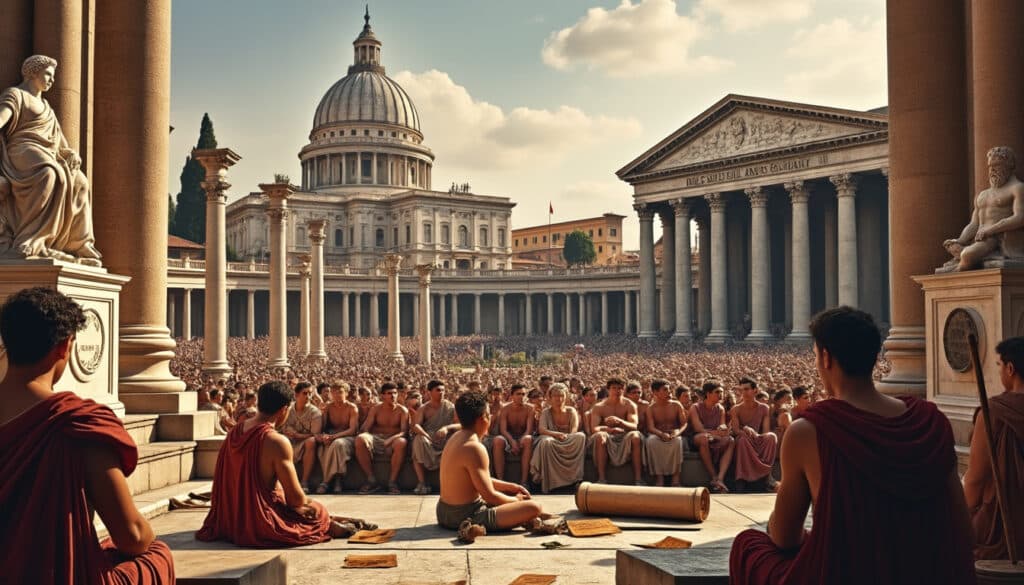
Legal Information and Rules in Rome
Rome is not just a city rich in history and architectural splendor. It is also a foundational cornerstone in the world’s legal heritage. As intricately as its monuments were crafted, Rome’s legal system laid down stones for the edifice of…
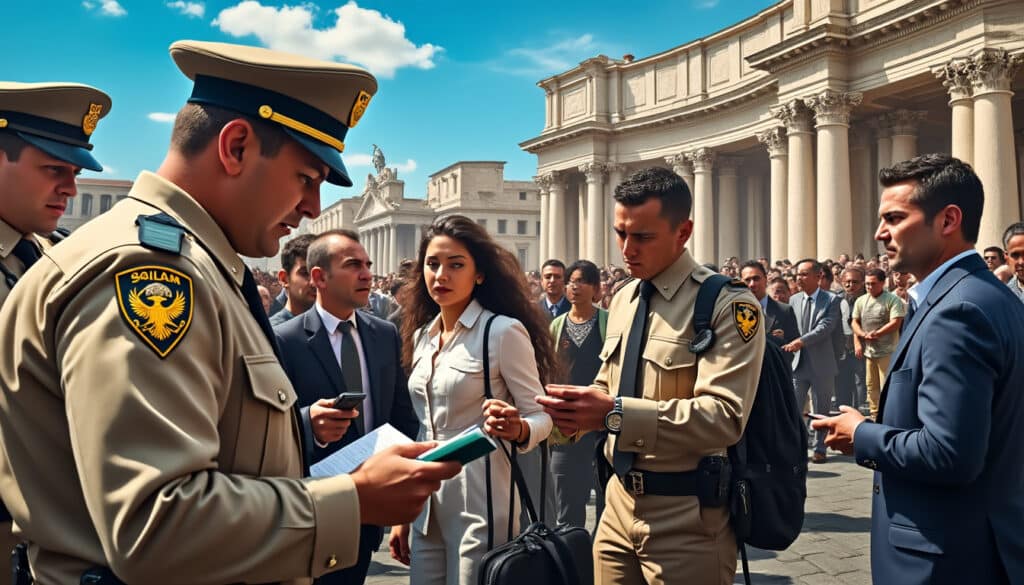
Criminal status and entry to Rome
When planning a visit to the enchanting city of Rome, it’s crucial to understand the implications of one’s criminal status on entry. Rome, with its captivating history, stunning architecture, and delectable cuisine, is an attractive destination for travelers worldwide. However,…

Drinking and age restrictions in Rome
Rome, the eternal city, is not just a treasure trove of ancient history and breathtaking art; it’s also a hub for vibrant nightlife and rich culinary experiences. For those planning to indulge in the local drinking culture, it’s essential to…
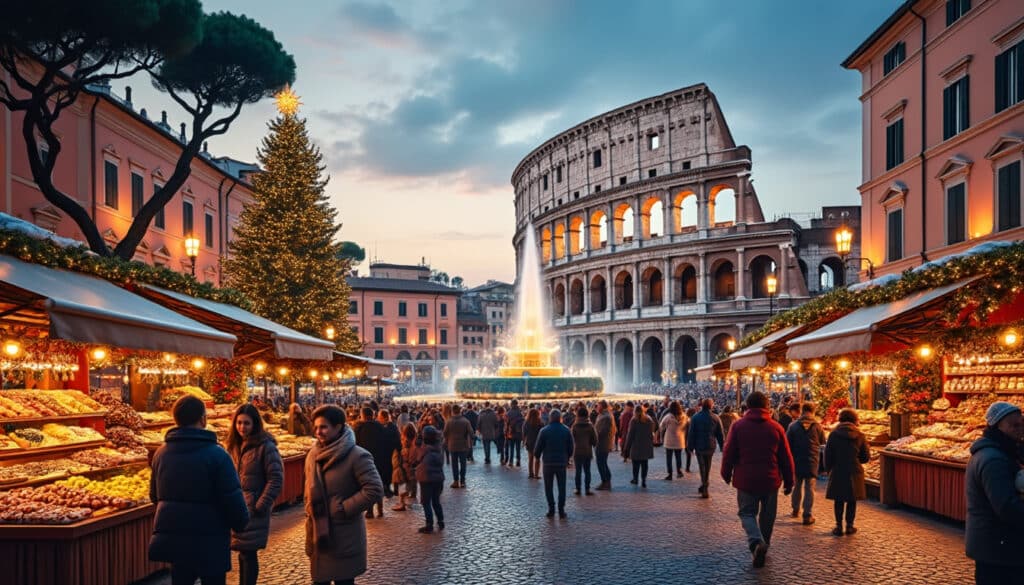
Rome, the Eternal City, is a place where ancient history coexists with vibrant, modern life. The city’s rich tapestry of culture, art, and delectable cuisine makes it an enticing destination for travelers any time of the year. However, understanding the…
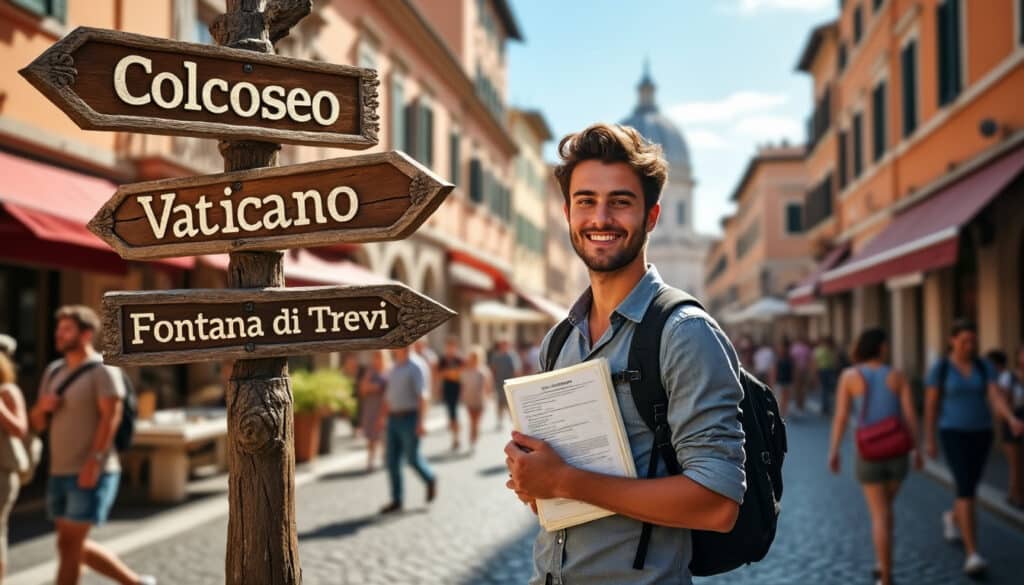
If you’ve ever dreamt of indulging in the effervescent culture, exquisite cuisine, and historic elegance of Rome, you’re not alone. The Eternal City draws many with its allure, offering a lifestyle that’s both charming and vibrant. However, moving to Rome…

Smoking, drugs, and red light laws in Rome
Rome, the Eternal City, is renowned not only for its timeless art and history but also for its colorful tapestry of modern life, making it an intriguing place to explore more than just tourist sites. From smoking regulations to drug…
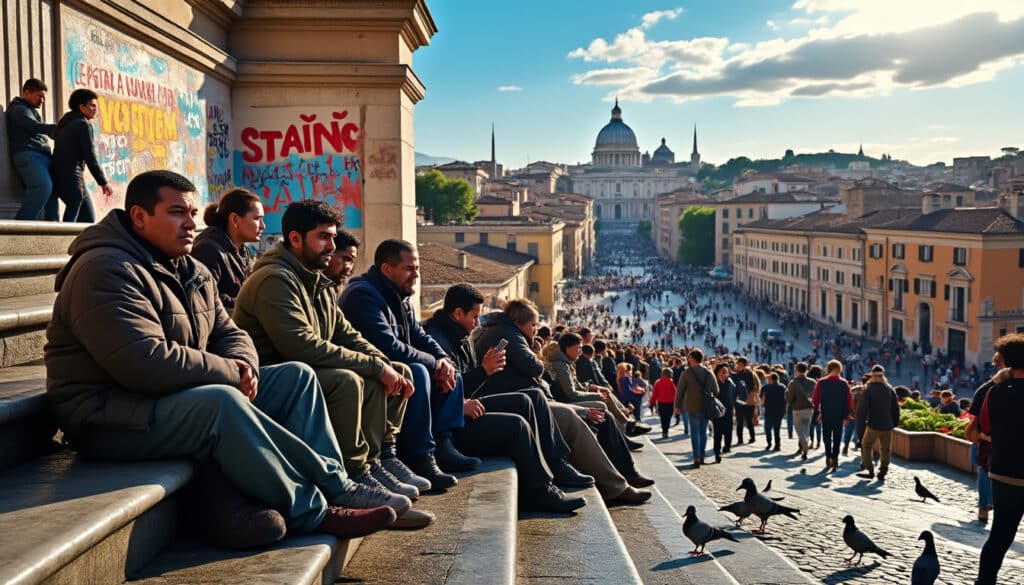
Social and discrimination issues in Rome
Rome, the Eternal City, is not just a hub for ancient ruins and divine cuisine; it is also a vibrant tapestry of diverse communities coexisting. Yet, beneath its opulent beauty, social and discrimination issues persistently simmer. In the midst of…

